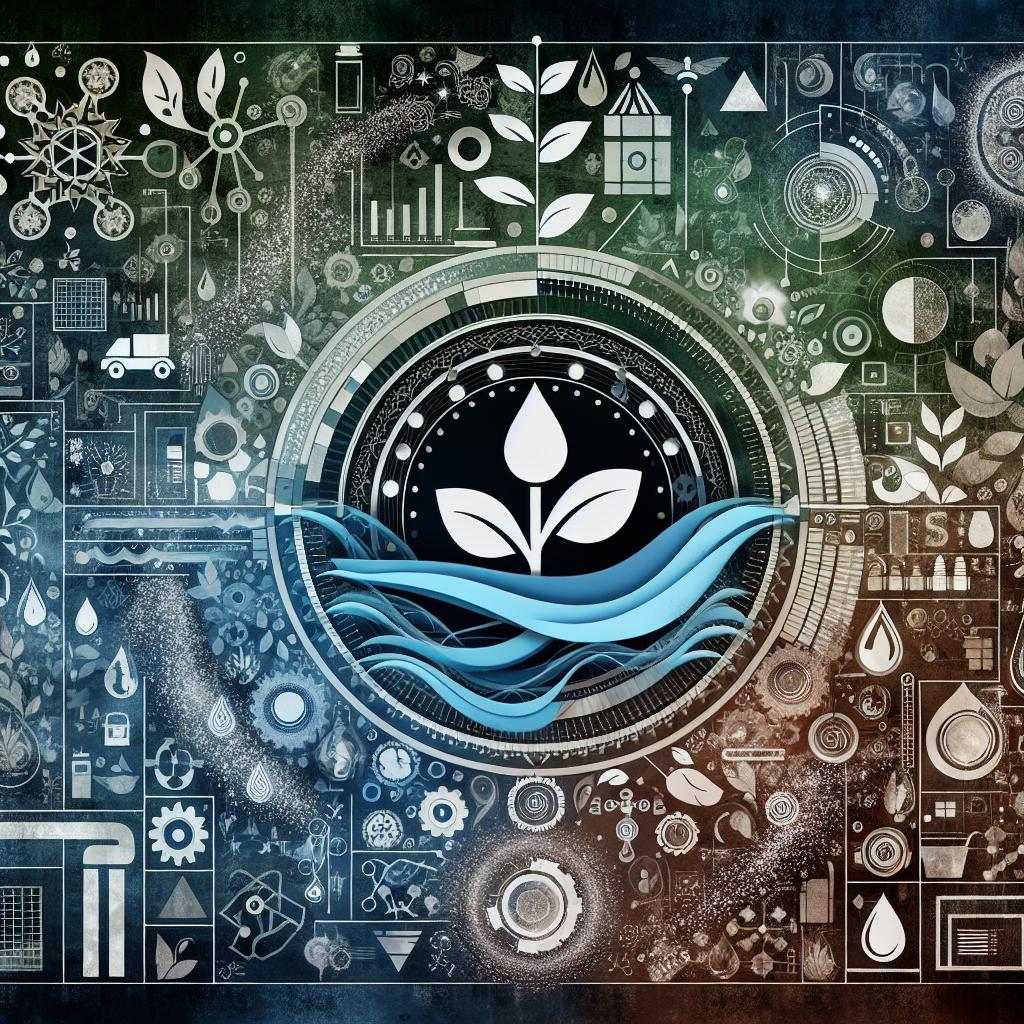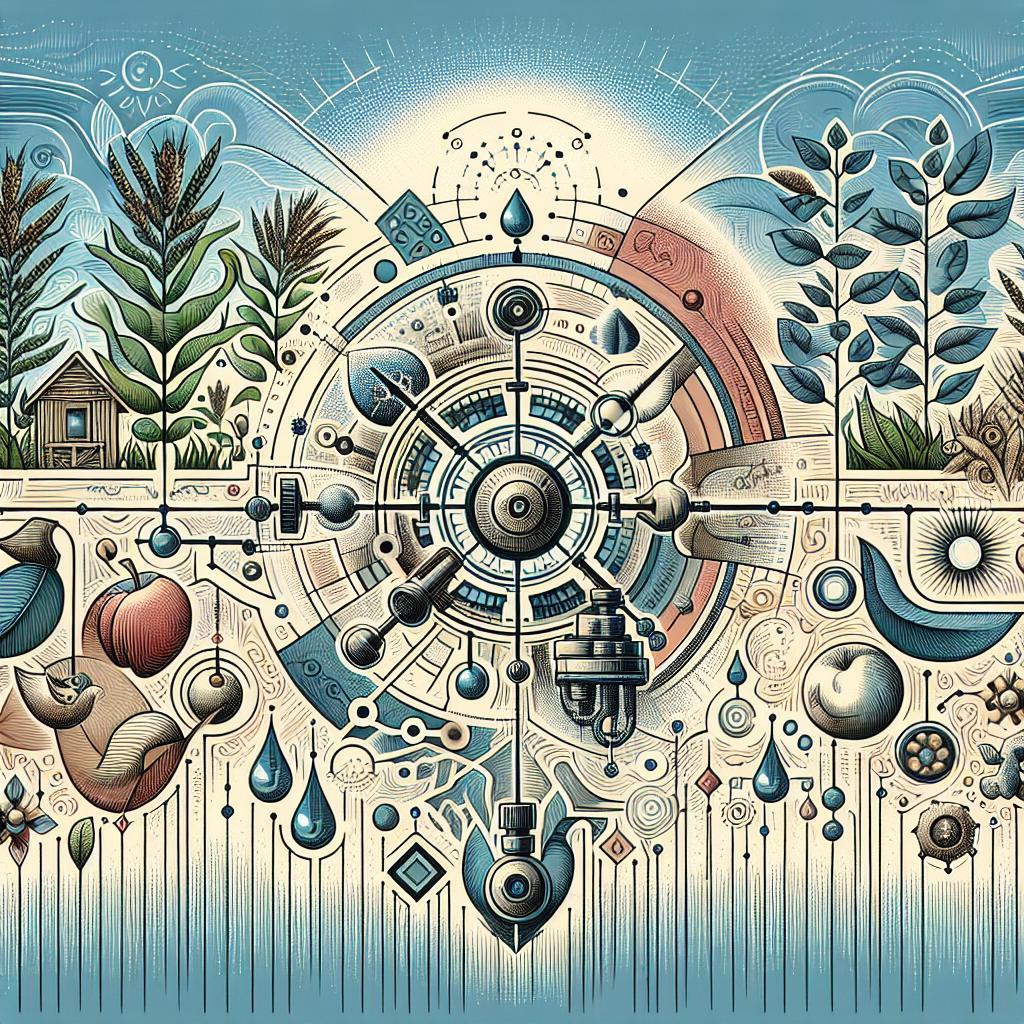This post may contain affiliate links which means I may receive a commission for purchases made through links. Learn more on my Private Policy page.
Exploring Low-Pressure Irrigation Solutions for Small Farms
In the dance of nature, where sun-kissed soil meets the gentle embrace of water, small farmers often find themselves in a delicate partnership with the elements. As the call for sustainable farming practices grows louder, the quest for efficient irrigation solutions becomes ever more vital — and that’s where low-pressure irrigation shines brightly! Picture this: lush fields thriving under a drizzling mist, farmers spending less time worrying about water bills and more time nurturing their crops. In this article, we’ll embark on a journey through the world of low-pressure irrigation systems tailored specifically for small farms. We’ll explore innovative techniques, share heartwarming success stories, and equip you with practical insights to make watering your crops a breezy affair. So grab a cup of coffee, roll up those sleeves, and let’s dive into the refreshing world of sustainable irrigation!
Understanding the Benefits of Low-Pressure Irrigation for Small Farms
Low-pressure irrigation systems offer a range of advantages that can significantly benefit small farms. These systems utilize less energy compared to traditional high-pressure methods, which translates to reduced operational costs. Farmers can achieve efficient water distribution and minimize waste, ensuring that every drop counts. Additionally, low-pressure irrigation helps to maintain soil structure and health by delivering water gently, preventing soil erosion and compaction that often arise from conventional irrigation methods. This gently applied moisture fosters better root development and plant health, ultimately leading to enhanced crop yields.
Furthermore, low-pressure irrigation systems are often easier to install and maintain, making them accessible for small-scale operations. Key benefits include:
- Reduced Water Consumption: Optimized delivery ensures precise water application.
- Improved Crop Quality: Consistent moisture levels encourage strong, healthy plants.
- Adaptability: Suitable for a variety of crops and soil types.
- Economic Benefits: Lower energy use decreases overall farm expenses.
To illustrate the differences between irrigation systems, refer to the following table:
| Feature | Traditional Irrigation | Low-Pressure Irrigation |
|---|---|---|
| Water Usage | High | Low |
| Energy Consumption | High | Minimal |
| Soil Health Impact | Negative | Positive |

Innovative Techniques to Maximize Water Efficiency
Maximizing water efficiency on small farms is crucial for sustainable agriculture. One effective approach is to implement low-pressure irrigation systems, which utilize gravity or low-pressure pumps to distribute water more effectively. These systems not only reduce energy costs but also ensure that every drop of water is utilized efficiently. Some innovative methods include:
- Drip Irrigation: Delivering precise amounts of water directly to plant roots reduces wastage and improves soil moisture retention.
- Subsurface Irrigation: This method places water below the soil surface, minimizing evaporation and maximizing uptake by plants.
- Micro-Sprinklers: Ideal for smaller plots, these devices disperse water in a fine mist, covering broader areas without over-saturating the soil.
Integrating technology into these irrigation methods can further enhance water efficiency. The use of sensors and smart controllers allows for real-time monitoring of soil moisture levels, which enables farmers to adjust irrigation schedules based on current conditions. For instance, farmers can utilize data analytics to identify the best times for irrigation, reducing both water consumption and labor costs. A simple comparison of traditional versus low-pressure irrigation systems can be seen in the table below:
| Feature | Traditional Irrigation | Low-Pressure Irrigation |
|---|---|---|
| Water Usage | Higher | Lower |
| Energy Costs | Higher | Lower |
| Soil Erosion Risk | Higher | Lower |
| Crop Yield | Variable | Consistently Higher |

Choosing the Right Equipment for Your Unique Farming Needs
When it comes to optimizing your small farm’s irrigation system, it’s critical to select equipment that aligns with your farming practices and environmental conditions. Low-pressure irrigation solutions can be cost-effective and efficient, allowing you to maximize water use while minimizing waste. Here are some options you might consider:
- Drip Irrigation: Perfect for row crops and gardens, it delivers water directly to the roots, maximizing absorption and reducing evaporation.
- Soaker Hoses: Ideal for overstuffed gardens, they allow for slow water release over time, keeping the soil consistently moist.
- Micro-Sprinklers: Suitable for smaller fields, these systems can be adjusted to cover various crop sizes and establish optimal watering conditions.
Additionally, understanding your soil type and plant water requirements can inform your equipment choice, ensuring you provide just the right amount of moisture. Here’s a quick reference table to help guide your decision:
| Equipment Type | Best For | Water Efficiency |
|---|---|---|
| Drip Irrigation | Vegetable crops and high-value plants | 90%+ |
| Soaker Hoses | Flower beds and shallow-rooted plants | 70%+ |
| Micro-Sprinklers | Small orchards and nurseries | 80%+ |

Best Practices for Implementing Low-Pressure Systems Effectively
To successfully implement low-pressure irrigation systems, it’s essential to understand the characteristics and requirements of your farm. Start by evaluating your soil type and moisture retention capabilities, as this will guide you in selecting the appropriate system. Choose components that align with your specific crops, such as drip lines for row crops or micro-sprinklers for fruits and vegetables. Regularly assess the water distribution uniformity through simple tests, ensuring that each plant receives adequate moisture without overwatering. Moreover, consider the incorporation of timers and sensors to automate watering schedules, reducing both labor and water waste.
Training is crucial in the adoption of low-pressure systems. Engage your team in workshops or hands-on demonstrations focusing on system maintenance and troubleshooting techniques. Create simple instructional materials, such as field guides or digital resources, that highlight best practices and common pitfalls. Additionally, collaborating with local agricultural experts can provide valuable insights tailored to your region’s climate and crop needs. Here’s a quick look at the key elements for optimal system performance:
| Key Elements | Best Practices |
|---|---|
| Water Source | Test water quality regularly |
| System Design | Optimize layout for minimal pressure loss |
| Maintenance | Inspect and clean filters often |
| Education | Provide ongoing training for staff |
Future Outlook
As we wrap up our journey through the world of low-pressure irrigation solutions for small farms, it’s clear that these innovative techniques are more than just a practical choice; they’re a pathway to resilience and sustainability in agriculture. By embracing these methods, small farmers can conserve water, reduce costs, and cultivate healthier crops—all while nurturing the land we cherish.
Remember, every drop counts, and by exploring and implementing these irrigation strategies, you’re not only investing in your farm’s future but also contributing to a more sustainable planet. Whether you’re a seasoned grower or just starting out, there’s a world of potential waiting just beyond the horizon.
So, grab your shovel, roll up your sleeves, and let’s dig into these exciting possibilities together! Here’s to growing smarter, greener, and closer to a bountiful harvest. Happy farming! 🌱💧
This post may contain affiliate links which means I may receive a commission for purchases made through links. Learn more on my Private Policy page.

